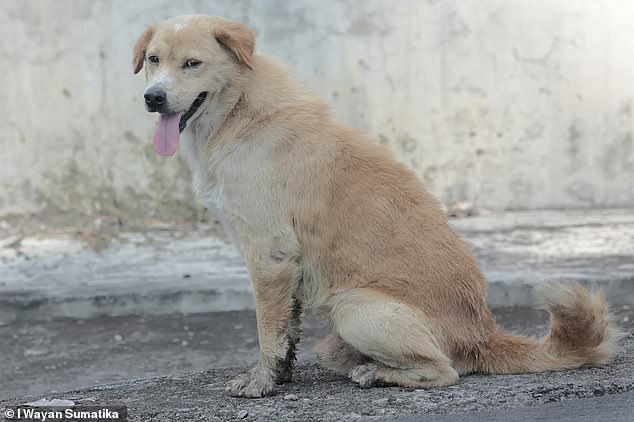They may be man’s best friend, but humans are at least partly to blame for dogs’ ever-shrinking brains.
Scientists in Hungary report that the domestic dog has a substantially smaller brain compared to its wild ancestor, the gray wolf.
The brains of domestic dogs have evolved to become smaller because dogs live in simpler environments that require less brain power compared to their wild counterparts.
Although experts say there may be other factors leading to the decline in size of domestic dogs, they have not identified exactly what they are.
In the wild, however, factors such as hibernation may be driving a decline in brain size in other species in the dog family, they say.
Researchers wanted to see whether the domestic dog (Canis familiaris, pictured) has an exceptionally small brain compared to other species in the canid family, including wolves, coyotes and jackals.
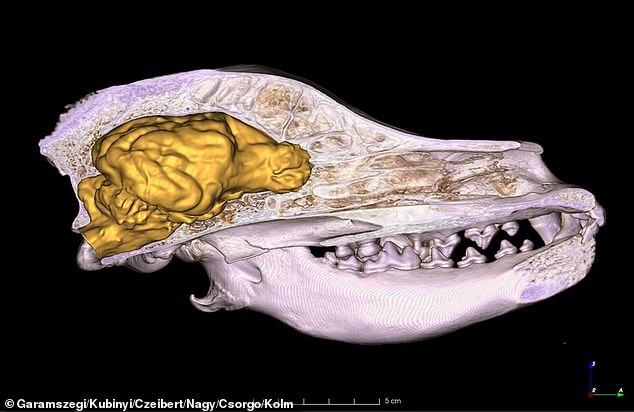
Domestic dogs’ brains have evolved to become smaller because they live in a simpler environment compared to their wild counterparts. Pictured here is a 3D model of the dog’s brain based on a high-resolution CT scan.
The study was led by László Zsolt Garamszegi of the Institute of Ecology and Botany, Ecological Research Centre, Hungary.
“The dog is a species of canid that was domesticated from its ancestral species, the gray wolf, at least 15,000 years ago,” the team says.
‘Today there are more than 400 breeds of dogs, and the general pattern is that relative brain size is dramatically reduced in dogs compared to the ancestral species, the gray wolf.’
The theory that dogs’ brains have become smaller over centuries of domestication has been widely accepted by veterinarians and researchers alike.
Whether searching for food, avoiding predators or finding a mate, domestic dogs have to deal with fewer cognitive demands compared to wild dogs.
According to the theory, because of this reduction in the need for brain capacity, the brains of domestic dogs have gradually shrunk.
The team explains: “This phenomenon is thought to be a result of the reduced need for metabolically expensive brain tissue in a domesticated environment.”
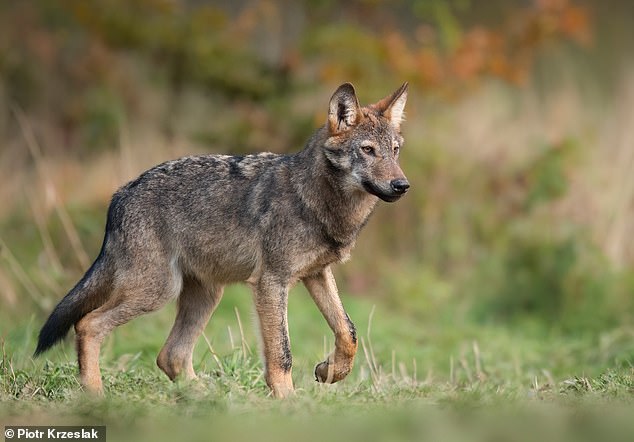
Domestic dogs show a substantial decrease in brain size compared to their wild ancestor, the gray wolf (Canis lupus, pictured)
The researchers wanted to see whether the brains of domestic dogs were especially small (relative to their body size) compared to their wild relatives.
They analyzed the brain and body sizes of 25 species of canids, including the domestic dog (Canis familiaris), the gray wolf (Canis lupus), and the common raccoon dog (Nyctereutes procyonoides).
They found that domestic dogs had a substantial decrease in brain size compared to their wild ancestor, the gray wolf.
But overall, the domestic dog had a relatively large brain size relative to some of the other species analyzed.
Interestingly, the study found that the common raccoon dog is a “more pronounced outlier” in terms of reduced brain size.
In other words, the common raccoon dog’s brain is unusually small for its body size, and researchers believe this is because it is the only one that hibernates.
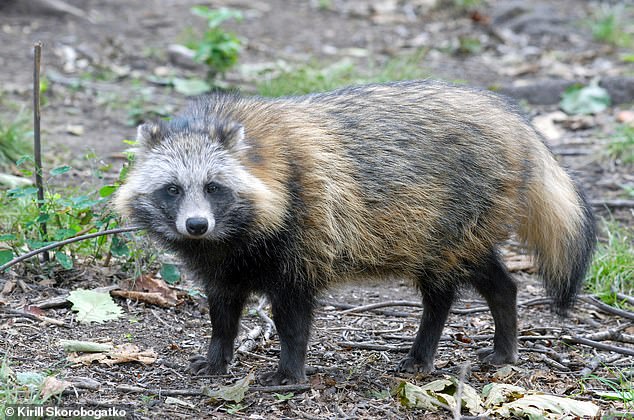
Pictured is the common raccoon dog (Nyctereutes procyonoides), a species of wild canid that hibernates.
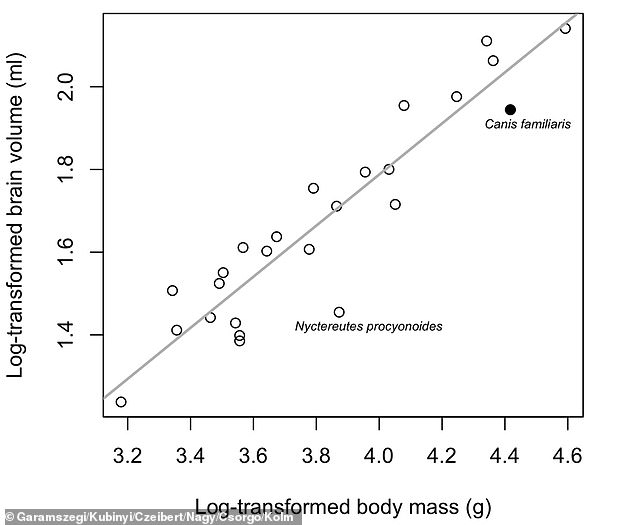
This graph represents the brain size (y axis) and body size (x axis) of individual canid species, including the domestic dog (Canis familiaris). Note the outlier, the common raccoon dog (Nyctereutes procyonoides), which has an unusually small brain for its medium-sized body.
Hibernation is associated with long periods of low metabolic activity and food shortages, so it likely leads to a reduction in brain size, the team says.
“Prolonged periods of food scarcity, such as during hibernation, prevent the evolution of large brains due to their consistently high energetic demands,” the team says.
The study concludes that while domestication contributes to the reduction in brain size in dogs, hibernation is also another cause, at least in wild canids.
Domestication, the authors say, should not be overestimated as an “exceptionally powerful evolutionary force” that shrank dogs’ brains.
The study was published today in Biology Letters.

